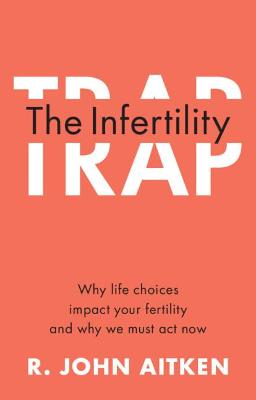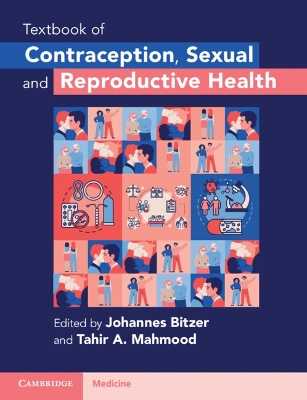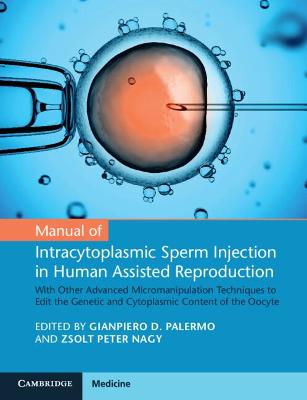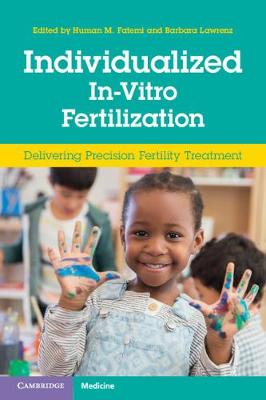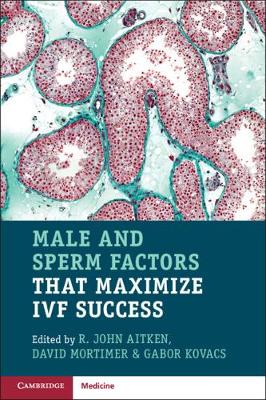Infertility Trap
Infertility Trap
Why Life Choices Impact your Fertility and Why We Must Act Now
Aitken, R. John
Cambridge University Press
05/2022
352
Mole
Inglês
9781108940818
15 a 20 dias
440
Descrição não disponível.
Foreword; Chapter 1; 1.1. Prologue; 1.2. Summary; 1.3. References; Chapter 2; 2.1. A journey into the demographic heart of the matter; 2.2. The shape of world population growth; 2.3. The emergence of infertility; 2.4. Longevity, population momentum and migration; 2.4.1. Longevity; 2.4.2. Longevity, affluence and infant mortality; 2.4.3. GDP and Health: mixed blessings; 2.4.4. Population momentum; 2.4.5. The key role played by migration; 2.4.6. Can China and India save us?; 2.4.7. Can Africa save us?; 2.5. Forecasting an uncertain future; 2.6. Summary; 2.7. References; Chapter 3; 3.1. Female fertility: hostage to affluence, age and the search for self-fulfilment; 3.1.1. The ascent of affluence; 3.1.2. Affluence, infertility and the Malthusian paradox; 3.2. The demographic transition; 3.3. Socio-educational factors and fertility; 3.3.1. Educational drivers for female infertility; 3.3.2. Female education and marriage; 3.4. The intersection of education and reproductive biology; 3.4.1. The fundamental biology of female reproduction; 3.4.2. Age of Menarche; 3.4.3. The reproductive years - over before you know it; 3.5. How the immaturity of human infants shapes our reproduction; 3.6. Reproduction and the care of our offspring; 3.6.1. What is the point of granny and grandad?; 3.7. Marriage - virtue or vestige; 3.8. Importance of adequate sex education; 3.8.1. Why have my eggs forsaken me?'; 3.9. Chromosomal abnormalities and female infertility; 3.10. The IVF industry and maternal age; 3.11. Are there any solutions to age dependent female infertility?; 3.11.1. Oocyte donation; 3.11.2. Oocyte freezing; 3.12. Socio-political issues; 3.12.1. Why would women wed?; 3.12.2. A role for pro-natalist Government policies?; 3.13. Summary; 3.14. References; Chapter 4; 4.1. What is happening to the human male?; 4.2. Testicular cancer; 4.3. Cancer and Opulence; 4.4. Other defects of the male reproductive tract; 4.5. The vexed question of declining sperm counts; 4.6. Possible causes of declining sperm counts; 4.7. Environmental pollution and semen quality; 4.8. Falling testosterone levels and semen quality; 4.9. Summary; 4.10. References; Chapter 5; 5.1. The miracle of conception; 5.1.1. The human spermatozoon; 5.1.2. The timing of insemination; 5.1.3. The ripening of spermatozoa in the female tract; 5.1.4. The complexity of fertilisation; 5.2. Summary; 5.3. References; Chapter 6; 6.1. Why are men infertile?; 6.1.1. Hamsters and human sperm function; 6.2. Oxidative stress and the infertile male; 6.2.1. Reactive oxygen species; 6.2.2. Thaddeus Mann and oxidative stress; 6.2.3. Oxidative stress and DNA damage; 6.2.4. Oxidative DNA damage and mutations on the offspring; 6.3. Genetic causes of male infertility; 6.3.1. Y-chromosome deletion; 6.3.2. Other genetic causes; 6.4. Summary; 6.5. References; Chapter 7; 7.1. The Janus faces of IVF; 7.1.1. Steptoe, Edwards and Purdy: the development of IVF; 7.1.2. ICSI and Male Infertility; 7.1.3. The rise of ICSI; 7.2. Consequences of ART when conducted at scale; 7.3. Negative impacts on IVF on the mutational load carried by children; 7.4. Impact of assisted conception on fertility; 7.5. Summary; 7.6. References; Chapter 8; 8.1. The gathering storm; 8.2. The infertility trap; 8.2.1. Demographic factors; 8.2.2. Social factors; 8.2.3. Economic factors; 8.2.4. Environmental factors; 8.2.5. Evolutionary factors; 8.3. Summary; 8.4. References; Chapter 9; 9.1. How do we escape the trap?; 9.2. Sex Education; 9.3. Remove reproductive toxicants; 9.4. Counter oxidative stress; 9.5. Elevate the status of reproductive toxicology; 9.6. Find ways of working with the IVF industry; 9.7. Engineer social change; 9.8. Summary; 9.9. References; Acknowledgements; Index.
Este título pertence ao(s) assunto(s) indicados(s). Para ver outros títulos clique no assunto desejado.
Foreword; Chapter 1; 1.1. Prologue; 1.2. Summary; 1.3. References; Chapter 2; 2.1. A journey into the demographic heart of the matter; 2.2. The shape of world population growth; 2.3. The emergence of infertility; 2.4. Longevity, population momentum and migration; 2.4.1. Longevity; 2.4.2. Longevity, affluence and infant mortality; 2.4.3. GDP and Health: mixed blessings; 2.4.4. Population momentum; 2.4.5. The key role played by migration; 2.4.6. Can China and India save us?; 2.4.7. Can Africa save us?; 2.5. Forecasting an uncertain future; 2.6. Summary; 2.7. References; Chapter 3; 3.1. Female fertility: hostage to affluence, age and the search for self-fulfilment; 3.1.1. The ascent of affluence; 3.1.2. Affluence, infertility and the Malthusian paradox; 3.2. The demographic transition; 3.3. Socio-educational factors and fertility; 3.3.1. Educational drivers for female infertility; 3.3.2. Female education and marriage; 3.4. The intersection of education and reproductive biology; 3.4.1. The fundamental biology of female reproduction; 3.4.2. Age of Menarche; 3.4.3. The reproductive years - over before you know it; 3.5. How the immaturity of human infants shapes our reproduction; 3.6. Reproduction and the care of our offspring; 3.6.1. What is the point of granny and grandad?; 3.7. Marriage - virtue or vestige; 3.8. Importance of adequate sex education; 3.8.1. Why have my eggs forsaken me?'; 3.9. Chromosomal abnormalities and female infertility; 3.10. The IVF industry and maternal age; 3.11. Are there any solutions to age dependent female infertility?; 3.11.1. Oocyte donation; 3.11.2. Oocyte freezing; 3.12. Socio-political issues; 3.12.1. Why would women wed?; 3.12.2. A role for pro-natalist Government policies?; 3.13. Summary; 3.14. References; Chapter 4; 4.1. What is happening to the human male?; 4.2. Testicular cancer; 4.3. Cancer and Opulence; 4.4. Other defects of the male reproductive tract; 4.5. The vexed question of declining sperm counts; 4.6. Possible causes of declining sperm counts; 4.7. Environmental pollution and semen quality; 4.8. Falling testosterone levels and semen quality; 4.9. Summary; 4.10. References; Chapter 5; 5.1. The miracle of conception; 5.1.1. The human spermatozoon; 5.1.2. The timing of insemination; 5.1.3. The ripening of spermatozoa in the female tract; 5.1.4. The complexity of fertilisation; 5.2. Summary; 5.3. References; Chapter 6; 6.1. Why are men infertile?; 6.1.1. Hamsters and human sperm function; 6.2. Oxidative stress and the infertile male; 6.2.1. Reactive oxygen species; 6.2.2. Thaddeus Mann and oxidative stress; 6.2.3. Oxidative stress and DNA damage; 6.2.4. Oxidative DNA damage and mutations on the offspring; 6.3. Genetic causes of male infertility; 6.3.1. Y-chromosome deletion; 6.3.2. Other genetic causes; 6.4. Summary; 6.5. References; Chapter 7; 7.1. The Janus faces of IVF; 7.1.1. Steptoe, Edwards and Purdy: the development of IVF; 7.1.2. ICSI and Male Infertility; 7.1.3. The rise of ICSI; 7.2. Consequences of ART when conducted at scale; 7.3. Negative impacts on IVF on the mutational load carried by children; 7.4. Impact of assisted conception on fertility; 7.5. Summary; 7.6. References; Chapter 8; 8.1. The gathering storm; 8.2. The infertility trap; 8.2.1. Demographic factors; 8.2.2. Social factors; 8.2.3. Economic factors; 8.2.4. Environmental factors; 8.2.5. Evolutionary factors; 8.3. Summary; 8.4. References; Chapter 9; 9.1. How do we escape the trap?; 9.2. Sex Education; 9.3. Remove reproductive toxicants; 9.4. Counter oxidative stress; 9.5. Elevate the status of reproductive toxicology; 9.6. Find ways of working with the IVF industry; 9.7. Engineer social change; 9.8. Summary; 9.9. References; Acknowledgements; Index.
Este título pertence ao(s) assunto(s) indicados(s). Para ver outros títulos clique no assunto desejado.

